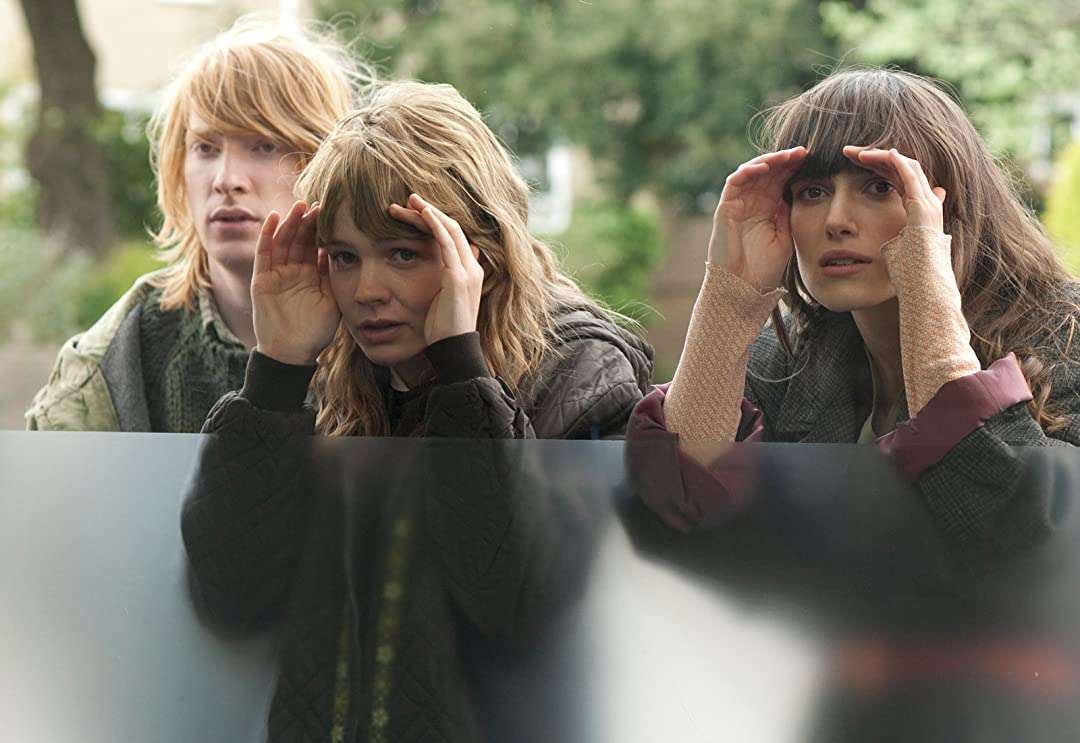Create a free profile to get unlimited access to exclusive videos, sweepstakes, and more!
Why Never Let Me Go is more timely (and painful) now than ever

It’s ironic that Never Let Me Go was all but ignored upon its initial release 10 years ago this week, but recent events have painfully, sadly, made it more relevant now than ever.
Directed by Mark Romanek, and adapted by Alex Garland (Ex Machina) from the 2005 dystopian sci-fi novel by Kazuo Ishiguro, Never Let Me Go exists in a world very similar to our own — one that places a premium on life while also treating it (and its key components) as worth nothing more than spare parts. Thanks to a 1952 experiment, humanity has managed to increase its life expectancy past 100 years of age. That experiment led to breeding clones, called “donors,” to provide vital organs for those who can afford them. Humans are being Xeroxed, living parallel lives to those that will one day need the organs and tissue these donors have to survive — with the cost being that of a life whose existence is to only service the source material when it breaks down.
As a pandemic keeps (most of) us in our homes and away from our families, it’s hard not to question why others would risk getting themselves or others sick by not wearing a mask outside — or by attending superspreader events en masse — as though there are “backups” like Kathy (Carey Mulligan), Tommy (Andrew Garfield), and Ruth (Keira Knightley) waiting in the wings. In reality, all we have is us. And each other.
While the sanctity of life seems frustratingly lost on a majority of the current population, it is on the forefront of the donors’ minds. It is a bitter irony in the film that the only ones who value and appreciate how special existence is (the donors) are those that only exist to increase the lifespan of a society that takes life for granted. That this inherent mindfulness of “one life to live” falls on those designed to extend that one life manifests early in the film, especially with the character of Kathy. Her voiceover conveys key worldbuilding details, like how each donor — the word “clone” is never used — is expected to make as many as four contributions on their way to being “complete,” which in the world of Never Let Me Go is a euphemism for “dying.” Society and those overseeing Kathy and her friends use such terminology to justify what they are doing and what donors have to do. It creates a separation, an emotional distance, that allows the humans pulling the strings to mostly avoid having to see their puppets as anything other than just that.
Donors have souls. And dreams, heartaches, hopes, and fears. Just like us. They’re not missing anything — it’s everyone else’s willful refusal to acknowledge or value donors for what they are. They are “less than” — even though their services are priceless. To care about them as anything more than donors requires a moral cost that is too much to bear, but enough to warrant sacrificing our ethics for a chance to further our comfort — to continue living longer in ways that validate and enable more ethical compromises. What’s done to add years to our lives depreciates those lives’ meaning because their extension comes at the price of those considered expendable. Which defeats the purpose of extending life at all.
It’s all the more a gut punch when we see how young donors can be when they are first harvested. (Most in their early 20s). Or that Kathy, a 28-year-old “carer” who has yet to make her first donation, has more compassion and empathy for life than those she is literally living for. For someone created in a lab, and having no parents, donors seem more human than most humans. Even as livers, kidneys, and, eventually, hearts, are carved out of them until they die, donors never lose sight of that which is all too easy for this society to turn a blind eye to.
Raised at Hailsham, a progressive boarding school for donors run by headmistress Miss Emily (an excellent Charlotte Rampling), Tommy, Ruth, and Kathy are subjected to a world that denies them a sense of autonomy while taking pride in how many times each donor has made a contribution to that world. But even in such identity compromised confines, there seemingly exists the potential for one of human life’s more defining characteristics: falling in love. Here, romance is literal salvation; as time passes, our trio of donors becomes aware of the possibility of a reprieve from service if donors can prove they are in love. This new information comes as Kathy sparks a romance with Tommy but, like the two lovers, it is short-lived. Because Ruth and Tommy ultimately fall in love and remain a couple throughout most of their confinement at Hailsham.
The love that could set them free ends up binding them even more to their fate. Again, donors are capable of the same manipulations and heartbreak as those receiving their organs, as we learn some time after Ruth and Tommy’s relationship ends. The ex-couple are both frail from a series of donations, with Ruth’s pain compounded by great guilt for never having really loved Tommy. She loved the idea of him, and selfishly clung to it so she wouldn’t have to endure existence alone. That guilt gives way to some sense of redemption, as Ruth tries to help Kathy and Tommy rekindle that which she denied them years ago, and put them on the path to deferral — before Ruth dies on the operating table.
Tommy and Kathy are left to discover that Ruth’s guilt-fueled sacrifice was in vain because there is no deferral. It was all part of yet another experiment: using Hailsham to study if “all but human” donors are capable of the love only “real humans” display. If they indeed do have souls.
The ethical ramifications of this break Tommy, before a final donation kills him. Kathy is left with the ticking clock as the start of her donations approaches. Her haunting voiceover in the film’s final moments says what we’ve all been thinking: What is the point of using (or not using) her life to extend others when each party eventually suffers the same fate? They all “complete.” Much like we have to ask ourselves how not wearing a mask or going out to brunch services us and the collective good right now, at a time when daily death tolls remind us how life is simultaneously both precious and seemingly taken for granted.
A decade after its theatrical release, Never Let Me Go is an underrated, unapologetic look at what it means to truly live versus merely exist. And, like all good sci-fi, the film uses the genre as a mirror for audiences to take a long, hard look at reality — and, hopefully, inspire them to do something when they don’t like what they see reflected back.
For if “spare parts” can appreciate the value of all life, perhaps, one day, we can, too.














